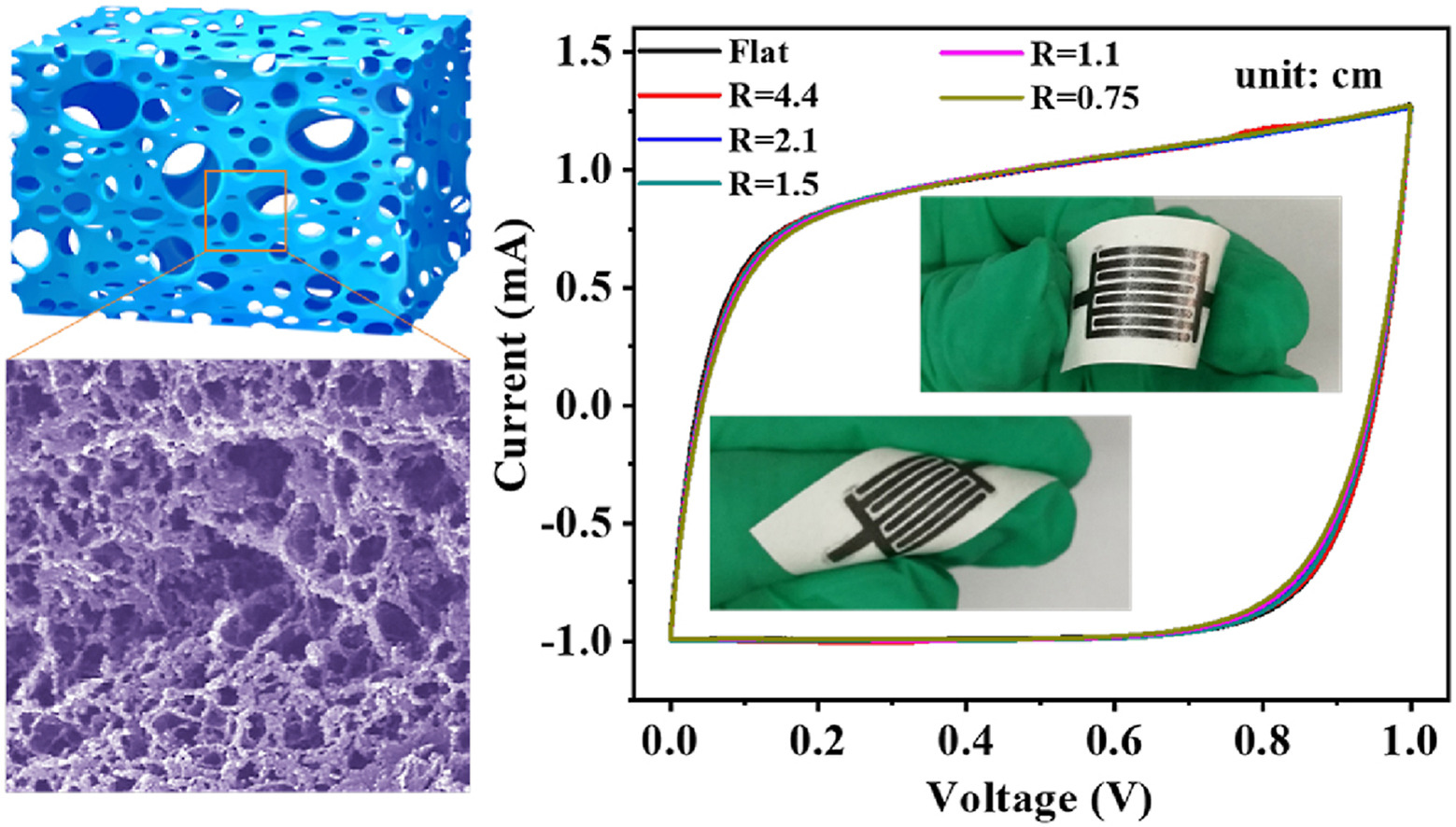Y.F. Gao, S.H. Zheng, H.L. Fu, J.X. Ma, X. Xua, L. Guana, H.H. Wu*, Z.-S. Wu*
Carbon, 2020, 168, 701-709.
DOI: 10.1016/j.carbon.2020.06.063 [PDF]

Rational design of electrode materials with tunable pore structure and large specific surface area (SSA) are of great importance for boosting high-performance supercapacitors (SCs) and micro-supercapacitors (MSCs). Here we develop a nitrogen doped hierarchically porous carbon aerogel (NPCA) derived from chitosan biomassviaa combined chelation reaction and freeze-drying procedures for SCs and MSCs. The NPCA exhibits three-dimensional (3D) reticular texture with ultrahigh SSA of 2529 m2g−1, which is highly responsible for accommodating large charge storage. The interconnected micro-/mesopores distributed on the continuous carbon network can create more adsorption sites and commodious channels for fast ion diffusion, yet offer high electrical conductivity for rapid electron transport. As a result, the assembled symmetric SC using NPCA exhibits enhanced electrochemical performance with energy density of 6.8 Wh kg−1at power density of 251 W kg−1. More importantly, the solid-state flexible NPCA-MSC presents high areal capacitance of 25.6 mF cm−2, outstanding energy density of 0.78 μWh cm−2, exceptional cyclability with only 1% capacitance fading after 10000 cycles, and superior flexibility with capacitance retention of 99%. Therefore, this biomass-derived carbon strategy will provide numerous opportunities to develop low-cost 3D micro-/mesoporous heteroatom-doped carbon aerogels for high-performance SCs and MSCs in a large scale.